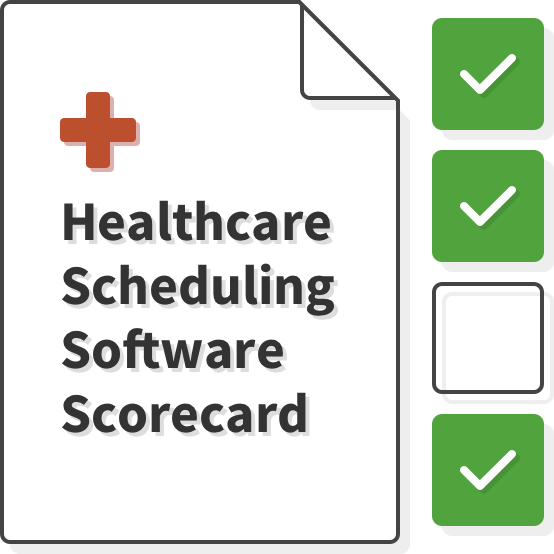Guide to Evaluating Healthcare Scheduling Software
Try When I Work for free
Workforce planning shouldn’t involve guesswork.
With the current labor situation and rising labor costs (especially in healthcare), you need information at your fingertips. Staff ability, hours, and overtime are all crucial things you need to know now, not after the shift is already over or the money is spent.
It’s not only the guesswork that will trip you up, but you also need a flexible system. The most brilliant schedule in the world can still be susceptible to a surprise curveball if it’s too rigid. When your schedule can’t adjust, it breaks.
You also need agility, because an agile scheduling system sees surprises as mere adaptations.
So how do you find the right software that can help you do all of that? How do you find software that can help you create healthcare labor reports that are actually useful for future planning?
We’ve put together a guide, based on three simple questions, to help you do just that, and made it easy for you to choose the scheduling software that works best for you and your team.
Does it meet your needs?
When choosing healthcare scheduling software, you first need to consider what you need.
- Communication: Good communication is vital to efficiency and the relationships between you and your employees, but it’s also something that you can drown in. Texts, emails, phone calls, phone messages, hallway conversations—it’s too difficult to track requests and changes via every possible communication route. The software should cut out texting completely, and keep all team communication within the scheduling app itself, where it belongs.
- Labor cost insights: The idea of letting employees use self scheduling is scary; how in the world can you control labor costs if you don’t know who’s taking which shifts? Your scheduling software should allow you to create templates or rules within the schedule so that employees cannot choose shifts that lead to overtime or other surprise costs for you, without your permission.
- Time and attendance: Look for software that lets your team clock in and out on their phone. There should be controls to prevent buddy-punching, early clock in, or location-based requirements. When clocking in is part of the app, all the data is in one place.
- Automation: Look for a scheduling tool that makes it easy to both create and fill the schedule. You shouldn’t have to spend hours hammering out a schedule!
- Integration: You’re already using a lot of other software and apps, and you want your scheduling software to play nice with them. For example, it should be able to communicate with your payroll and bookkeeping software.
- Job sites: Chances are that you have multiple locations or departments that you’re scheduling for. The software should be able to handle that easily and clearly, so your staff knows where to report for their shift.
- Position management: Scheduling for healthcare is unique in that each shift has to have a specific number of people with specific qualifications. Your scheduling app should allow you to easily set those guidelines so that every shift has the qualified people needed.
- Break management: It’s easy for employees to forget to clock in and out for breaks if the time clock isn’t nearby. When they have an app on their mobile device, however, that helps solve the problem. Your tool should also have the ability to automatically manage breaks.
You probably have more considerations, but this is a pretty solid list of what are must-haves for healthcare scheduling software from a management’s point of view.
But hold on: for adoption to be a success, your employees have to like using it, too.
Does it meet your employees’ needs?
You can bring in all the new tools available, but if your team doesn’t like using them, your success will be limited.
Look for scheduling software with these qualities in mind:
- Flexibility: Employees want flexibility and more work-life balance across all industries, not just healthcare. But the demands of healthcare make it especially important to offer these. Many scheduling platforms don’t allow for flexibility, though, and because it’s not baked in, you have to fight the tool to have a flexible schedule. Flexible scheduling in healthcare gives your staff autonomy over their schedule. They have more control of their lives, and that better work-life balance makes for happier employees.
- Mobile friendly: People are busy and on the move; the most important parts of their lives are managed and captured through their mobile device. If your staff can’t access their schedule from their phone, any time and any place, what’s the point? Remember years ago, when you had to call the movie theater to find out what movies were playing and at what time? We don’t do that anymore. Don’t make your staff call or run into the break room at work to find out when they work, either.
- Employee usability: Avoid tools that don’t have a dedicated app; using a mobile browser is a poor substitution for a dedicated function. But just because an app is available on mobile platforms doesn’t mean it’s easy to use. You need to find something that has all the functionality your team needs, without being difficult to use. Great user interface, intuitive location of settings and functions—it should be easy to figure out.
- Great reviews: This ties into the usability factor. When scoping out new scheduling software, look for indications others like it as well. Especially watch for users who give the tool high reviews and point out the last tools they tried, but their team never used. That’s a very good sign that it’s user-friendly.
The overarching question is this: does this scheduling software make my employees’ lives easier?
Because, if it does, the final consideration is to make sure it helps you meet patients’ needs.
Does it meet your patients’ needs?
Having enough staff to meet patient demand is vital to patient care. Shifts with good coverage mean fewer overworked staff, fewer mistakes, and less stress. Patients benefit from all of that through better care and more attention.
Look for scheduling software that allows for:
- Labor sharing: If you have multiple locations, the scheduling tool should allow you to easily share staff between them. Absolutely no one likes a long call chain to find someone to fill a shift. The plus side of having all of your locational scheduling under one roof is that you might have team members who want to pick up more hours at other locations. Your tool should allow them to do it easily.
- Part-time or PRN staffing: Managing a mix of full-time, part-time, and PRN staff can be rough. It’s a headache full of calls, texts, and emails to make it work. Your scheduling software should be able to handle it all, making it possible to create open shifts that can be claimed by staff. And remember, all communication should happen within the scheduling app itself.
- Last-minute shift changes: This is one of those curveballs we were talking about at the start. Healthcare is an industry where you absolutely need good shift coverage. A last-minute change can create chaos for the shift manager, but it doesn’t have to if your scheduling tool allows you to easily offer shifts to those who are qualified.
While we put the question about patients’ needs last in terms of choosing the right scheduling software, the reality is that, when patient care is put first, the rest falls into place. Patient care is not optional, so it’s something that has to be considered when you’re choosing tools for your facility. That includes the decision on which scheduling software to use.
Ultimately, any tool that meets each of these considerations will lead to the best patient care and happier employees, all while making the scheduling process so much easier for you.
Check out this scorecard we’ve created for you. It will help you measure the different scheduling software options out there and find the one that’s right for you and your healthcare team.







